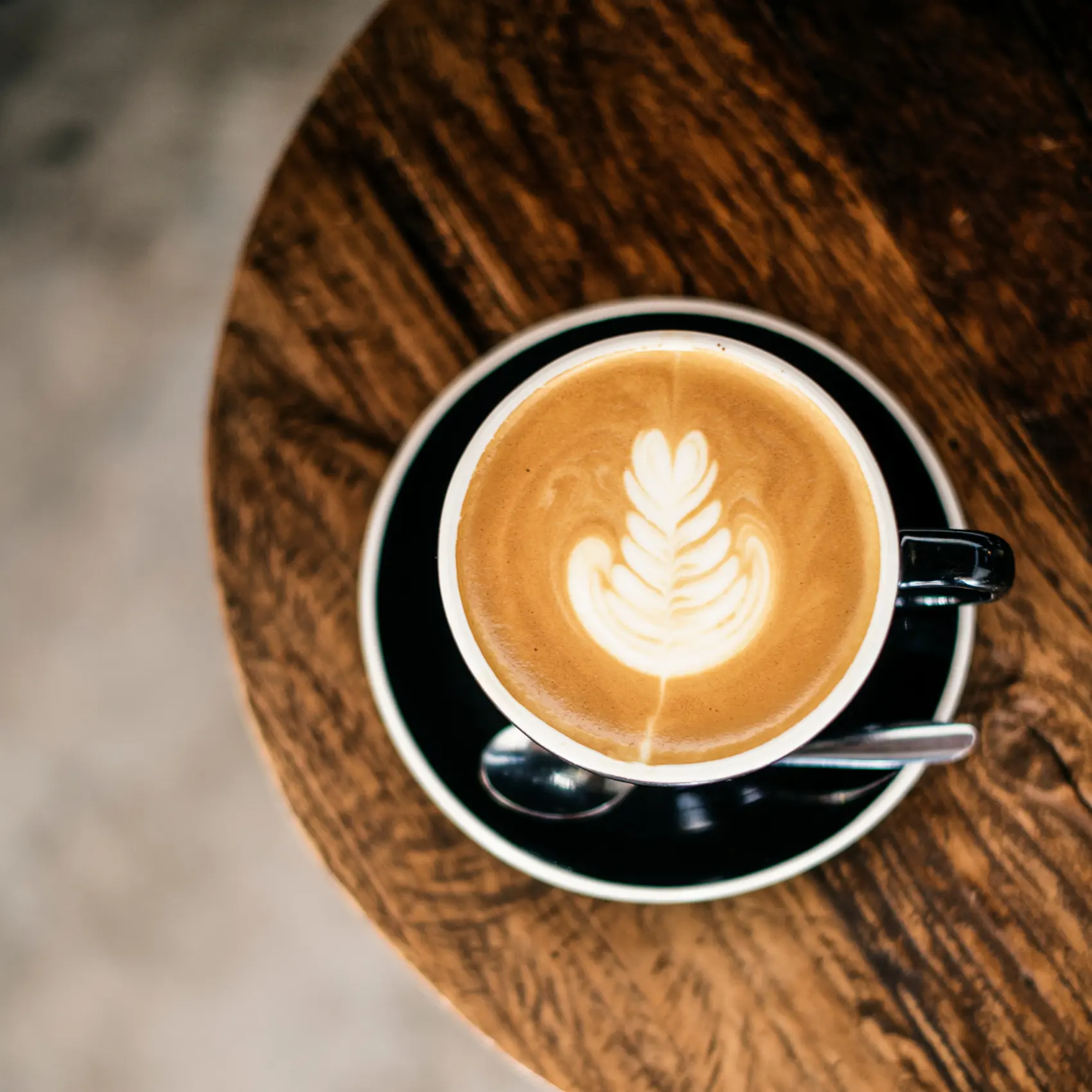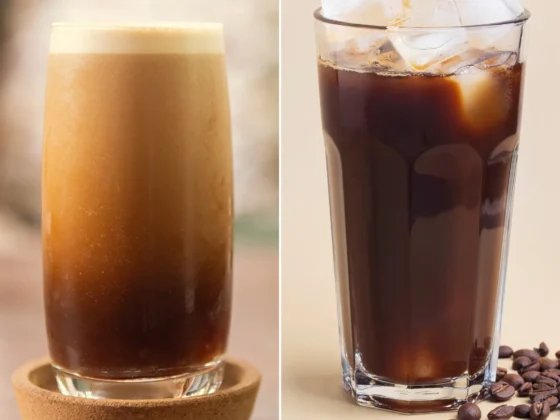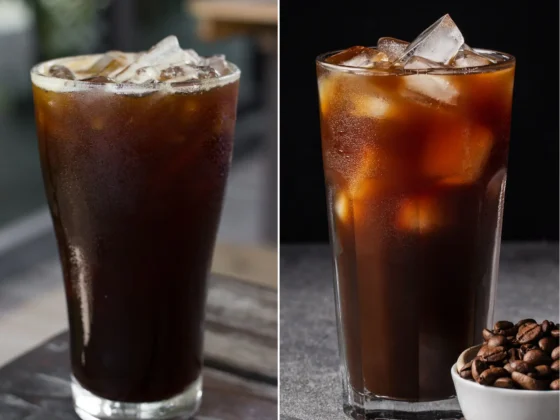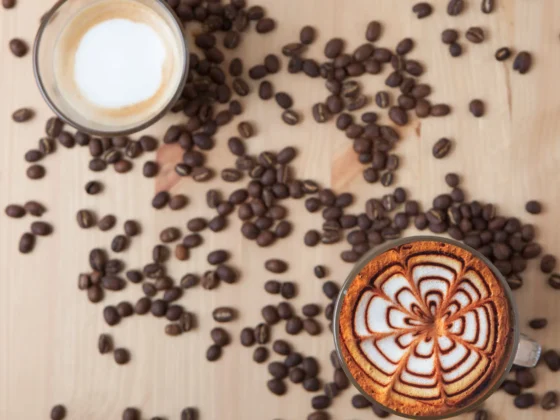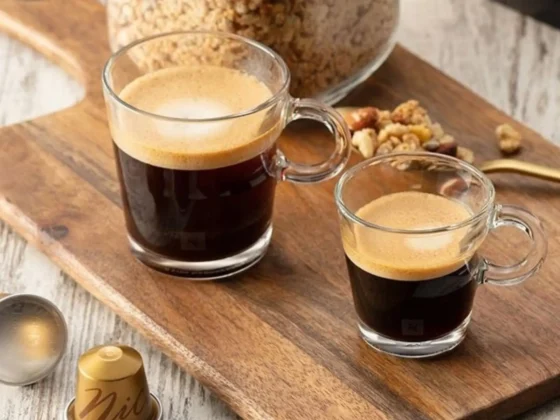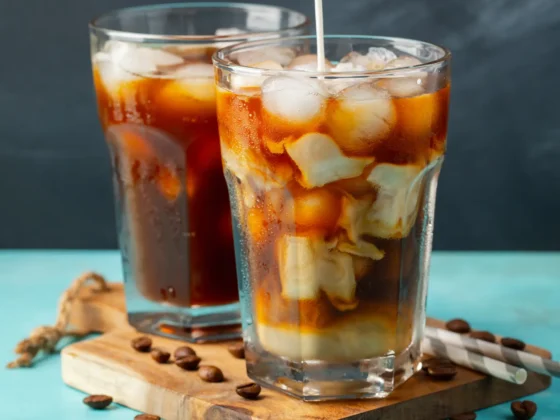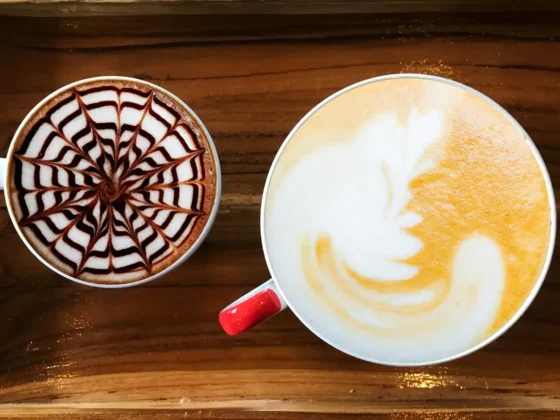Dive into the rich, frothy world of the cappuccino, a coffee classic that has captivated taste buds globally and stood the test of time. Originating from Italy but cherished worldwide, a cappuccino offers a harmonious blend of espresso, steamed milk, and milk froth. This guide serves as your comprehensive roadmap to everything cappuccino-related, whether you’re new to this delicious beverage or a seasoned aficionado. From the intricacies of its preparation method, which requires specialized equipment and an eye for detail, to the careful selection of coffee beans that set the tone for the entire drink, we leave no stone unturned.
Ever wondered how a cappuccino stacks up against other popular coffee drinks? We’ve got that covered too. And it doesn’t stop there; we delve into the fine art of tasting, making your cappuccino experience about more than just a caffeine fix. Whether you aim to craft the perfect cup at home or simply gain a newfound appreciation for your next café order, this guide equips you with the essentials to fully savor all that cappuccino coffee has to offer.
Cappuccino: Key Takeaway
- Rich Historical Roots: The cappuccino has a storied history rooted in Italian coffee culture, making it more than just a beverage but a symbol of tradition and craftsmanship.
- Art and Science of Preparation: Crafting the perfect cappuccino involves a meticulous balance of espresso, steamed milk, and froth, requiring both technical skill and artistic flair.
- Complex Flavor Profile: The art of tasting a cappuccino is a nuanced experience that involves appreciating its layered composition, from the intense espresso to the creamy froth.
- Versatility and Comparisons: When compared to other popular espresso-based drinks like lattes, mochas, macchiatos, and cortados, the cappuccino offers a well-balanced option that stands out for its proportional harmony and textural diversity.
- Customizable Yet Timeless: The cappuccino remains a classic choice but offers enough flexibility for variations and customizations, appealing to both casual coffee drinkers and seasoned aficionados.
What is a Cappuccino?

A Cappuccino is a beloved coffee beverage that originates from Italy, where it holds a special place as a morning indulgence or a mid-morning revitalizer. Pronounced as /ˌkæpʊˈtʃiːnoʊ/ in English and [kapputˈtʃiːno] in Italian (with the plural being cappuccini, taken from the German word Kapuziner), this classic beverage is traditionally accompanied by sweet pastries during breakfast and has garnered a worldwide following. The standard cappuccino coffee is a harmonious blend of espresso, steamed milk, and milk foam, often prepared using specialized espresso machines. (1) The assembly process involves pouring espresso at the bottom of the cup, adding an equal measure of hot, textured milk, and topping it off with a layer of milk froth. In certain instances, this foam layer may be artistically designed, known as latte art, or garnished with flavor enhancers like cinnamon or cocoa powder. The universal ratio followed by skilled baristas for making this beverage is 1:1:1, signifying equal parts of espresso, hot milk, and milk foam.
Types of Cappuccino Drinks
Cappuccinos have captivated the global palate, with its rich blend of espresso and frothy milk serving as a canvas for countless adaptations. While the foundation remains true to its espresso and milk components, various tweaks and personalization’s have given rise to an array of distinctive cappuccino variations.
Classic Cappuccino
At its heart, a classic cappuccino is elegantly simple. It brings together one to two shots of robust espresso, crowned with carefully steamed and frothed milk. Each coffee maestro might sprinkle in their personal touch, making every sip a unique delight.
Iced Cappuccino (Cappuccini Freddo)
Taking the warmth out of the classic, the iced cappuccino offers a refreshing spin. In Italy, it’s traditionally made with cold frothed milk layered over espresso. Meanwhile, its American interpretation often leans towards an iced or even blended avatar.
Wet Cappuccino (Cappuccini Chiaro)
Distinguished by a higher volume of steamed milk and a delicate dollop of froth, the wet cappuccino is creamier and milder in flavor. Its resemblance to a caffe latte is evident, setting itself apart with just a hint of foam on top.
Dry Cappuccino (Cappuccini Scurro)
A celebration of espresso’s rich flavors, the dry cappuccino has minimal steamed milk but boasts a thick, frothy crown. This froth not only accentuates the drink’s taste but also ensures that the warmth lingers longer.
Flavored Cappuccino
The urge to innovate has led to the introduction of a spectrum of flavors to the classic cappuccino, particularly popular in the United States. Flavor-infused syrups like vanilla, caramel, or raspberry are added to the mix. And for the final flourish? Toppings such as powdered cinnamon, drizzles of chocolate sauce, or even a hint of caramel can be added to the froth, elevating the experience to a whole new level.
The cappuccino’s versatility has made it a canvas for creativity and experimentation, leading to a vibrant array of options for coffee aficionados around the world.
The Historical Roots of Cappuccino
The story of cappuccino is a fascinating journey that spans continents and centuries. This iconic coffee drink has its origins deeply rooted in European traditions, influenced by cultural shifts, and refined through technological advances. Here, we delve into its rich history, from its early inception to its modern-day global presence.
Origins and Evolution: The Birth of Cappuccino

The cappuccino’s ancestry can be mapped back to Europe’s initial foray into coffee culture, which was influenced heavily by Ottoman brewing techniques. The coffee drink’s metamorphosis serves as a vivid representation of Europe’s intricate and multifaceted coffee customs.
- Early Methods (Ottoman Influence): The first European contact with coffee involved Ottoman brewing techniques, which required boiling coffee with water and often incorporating sugar.
- Milk Infusion (1700s): The concept of adding milk to coffee was not new; historical data shows Europeans were infusing their coffee with milk as far back as the 18th century.
- Kapuziner and its Evolution (Habsburg Empire): Stemming from the Habsburg domains, the Kapuziner was an early prototype of what would become the cappuccino. It was initially labeled “coffee with cream and sugar,” a name that drew its inspiration from the Capuchin friars’ robe colors.
- Technological Breakthrough (Early 20th Century): The debut of the espresso machine was a watershed moment in coffee’s history. Though the first models were not flawless, they paved the way for specialized coffee brewing, including the modern cappuccino, whose earliest records are dated to the 1930s.
The story of the cappuccino, evolving from rudimentary forms to a universally beloved beverage, is not merely an indicator
Global Adaptations: How the World Embraced Cappuccino

While cappuccino found its roots in Europe, its global dissemination is a narrative of adaptation and regional flair.
- United Kingdom: Cappuccino quickly caught on in the UK, fueled by the British penchant for milk-based coffee and the desire to linger in coffee shops.
- United States: In America, the drink found a home within Italian-American communities, each with its own story of introducing cappuccino—be it Caffe Reggio in New York (2) or Caffe Trieste in San Francisco.
- Varied European Interpretations: Outside of Italy, the cappuccino was often served with dark coffee and whipped cream, a practice still common in parts of Europe as recently as 2014.
As it spread across the globe, the cappuccino took on local characteristics while maintaining its fundamental essence, proving its adaptability and universal appeal.
Key Figures: Who Shaped the Cappuccino We Know Today
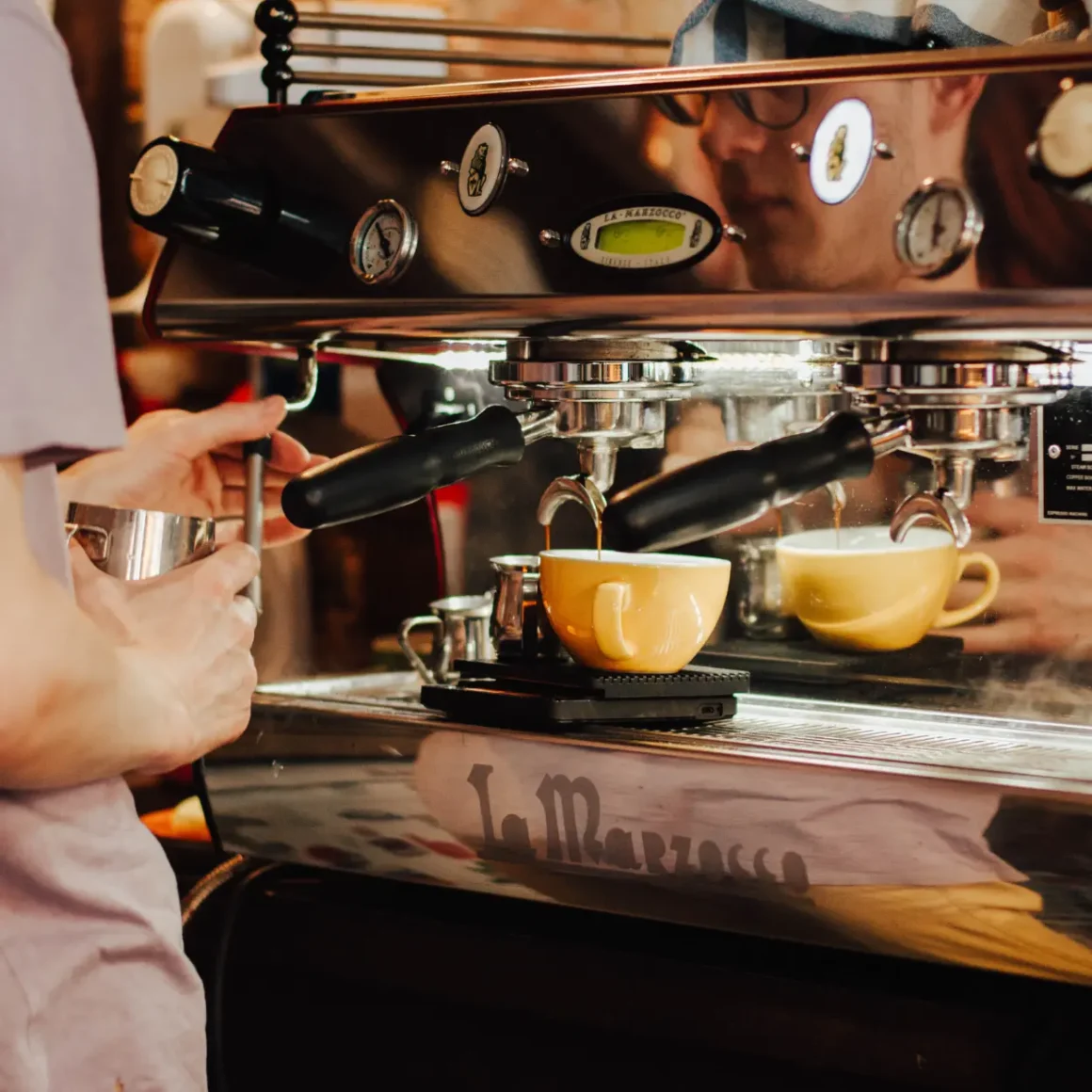
The transformation of cappuccino into the beloved drink we enjoy today was not a solo act but a collective effort shaped by key individuals and societal shifts.
- Luigi Bezzera: The Milanese inventor was the first to file a patent for an espresso machine, which drastically altered coffee brewing techniques and set the stage for cappuccino’s future iterations. (3)
- Viennese Coffee Houses: These establishments played an essential role in popularizing creamy coffee drinks, including Kapuziner, laying the groundwork for the modern cappuccino.
- Italian Innovators: Post-WWII Italy saw the birth of the “age of crema,” made possible through advanced machines capable of higher pressure, which significantly contributed to the cappuccino’s current form.
The cappuccino we relish today is the result of a dynamic interplay between innovation, culture, and key personalities who were willing to experiment and redefine the norms of coffee consumption.
The Anatomy of a Perfect Cappuccino
In the world of coffee, few beverages elicit as much adoration and scrutiny as the cappuccino. It’s a drink whose essence lies in its attention to detail, from the espresso shot that forms its core to the finely steamed milk and foam that crown it. In this guide, we will delve into the various components that make this coffee specialty a timeless favorite.
Espresso: The Heart of the Cappuccino
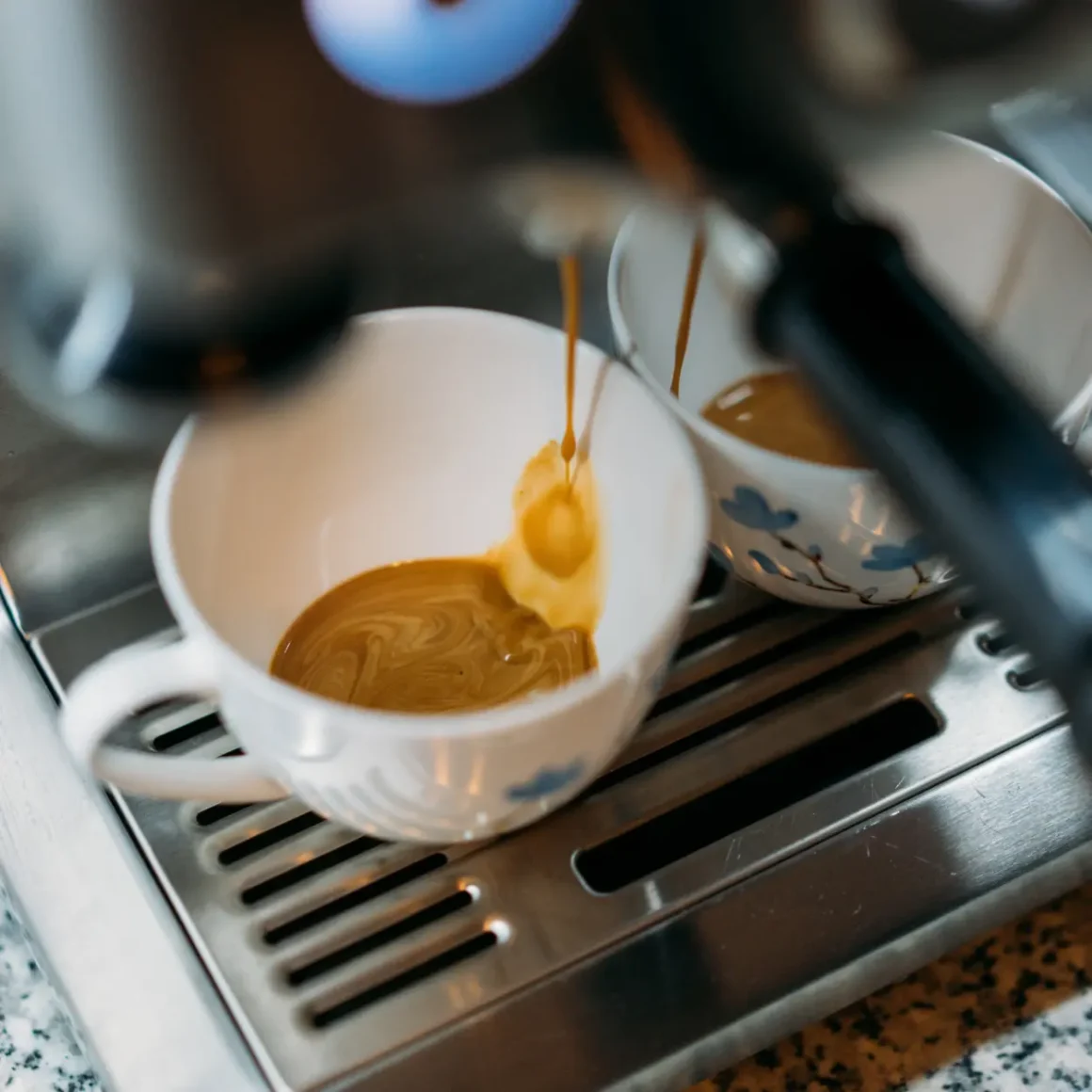
At the core of every cappuccino is a well-executed shot of espresso. It’s the robust foundation upon which the rest of the beverage is built.
- Quality Beans: Begin with high-grade, freshly roasted coffee beans. The bean type can significantly affect the flavor profile, making it essential to select beans that resonate with your taste.
- Precision Grinding: The grind size of the coffee must be fine but not overly so, allowing for maximum flavor extraction during the espresso brewing process.
- Proper Brewing: The brewing process should take about 25-30 seconds using a pressure of approximately 9 bars. This time frame ensures that both the subtle flavors and robust character of the coffee are captured.
Ending with a shot of espresso that is both aromatic and packed with flavor is critical; otherwise, the milk and foam can overshadow the coffee, throwing the entire drink off balance.
Milk Steaming and Frothing: Achieving the Perfect Texture
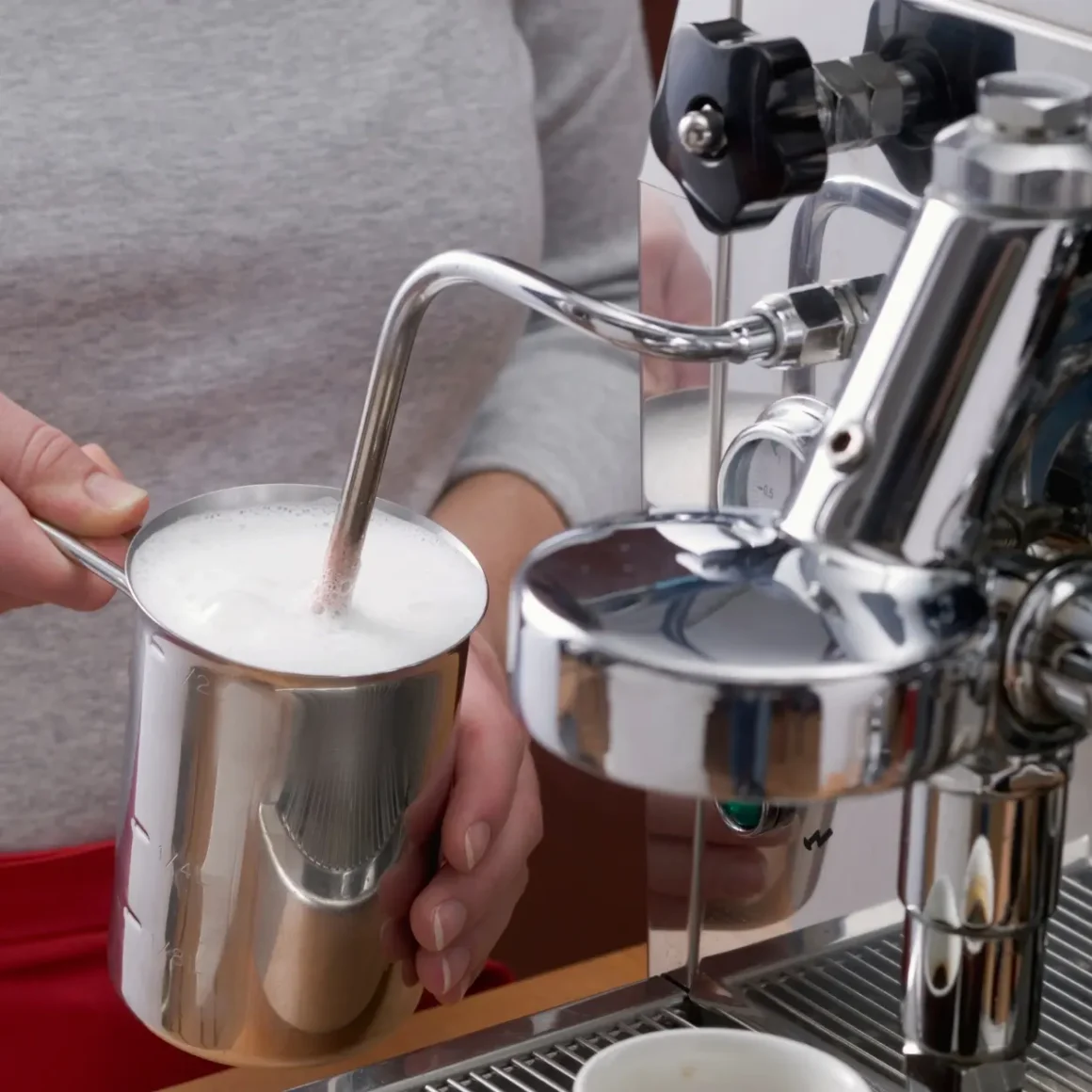
Texture plays a crucial role in distinguishing an average cappuccino from a great one.
- Temperature: Starting with cold milk is essential for achieving a rich, velvety texture. Aim for a temperature of around 100 degrees Fahrenheit as the milk begins to warm.
- Aeration: Inserting the steam wand just slightly submerged allows for a rapid intake of air, contributing to the froth’s quality. The aim is to get as much air into the milk as quickly as possible to maintain its elasticity.
- Skillful Pouring: Once the milk has been adequately steamed and frothed, pouring it over the espresso in a manner that allows for a balanced layer of foam is an art in itself.
Remember, the perfect texture can make or break your cappuccino. The milk should complement the espresso, not mask it, making each sip a harmonious blend of robust and creamy.
The Golden Ratio: Balancing Espresso and Milk
Striking the perfect balance between espresso and milk is what transforms an ordinary cup of coffee into an extraordinary cappuccino.
- Volume Proportion: A traditional cappuccino typically consists of one-third espresso, one-third steamed milk, and one-third froth. This ratio allows for a balanced flavor profile.
- Layering: The separation between the layers should be evident but not overly distinct. The idea is to have a seamless transition from the strong espresso base to the creamy foam on top.
- Cup Size: Opt for a six-ounce cup to ensure that the proportions are maintained, giving each component its moment to shine.
The ultimate goal is to craft a cappuccino where espresso and milk exist in perfect harmony, allowing for an exceptional coffee experience with every sip.
How to Make a Cappuccino

Crafting the perfect cappuccino is both an art and a science, blending aromatic coffee and velvety milk into a delicious experience. Whether you’re a home brewer or an aspiring barista, understanding the nuances can make all the difference in your cup. Let’s delve into the particulars, from equipment and coffee beans to preparation techniques, to help you brew the ideal cappuccino.
Step by Step Guide
Making a cappuccino involves multiple stages, each demanding its own set of considerations. Let’s break down the process:
- Preparation of Tools: Firstly, ensure your espresso machine is fully heated. Add finely ground coffee to the portafilter, compress the grounds, and attach it to the machine. Simultaneously, pour 4 ounces of milk into a pitcher designed for steaming.
- Brewing Espresso: Extract a 2-ounce double shot of espresso into your preheated cup.
- Steaming Milk: The quality of your milk froth is critical. The temperature should rise to around 160°F as you steam, and for a fluffy result, keep the wand’s tip closer to the milk’s surface to incorporate more air.
- Combining Elements: Hold your milk pitcher about 3 inches above the cup and pour in a circular motion, mixing the milk and espresso. Use a spoon to hold back the froth while pouring the denser milk, then top with the lighter foam.
Achieving a balanced cappuccino demands attention to detail at every step. Perfection comes with practice, so don’t hesitate to experiment within these guidelines.
Traditional Espresso Machines vs. Modern Alternatives
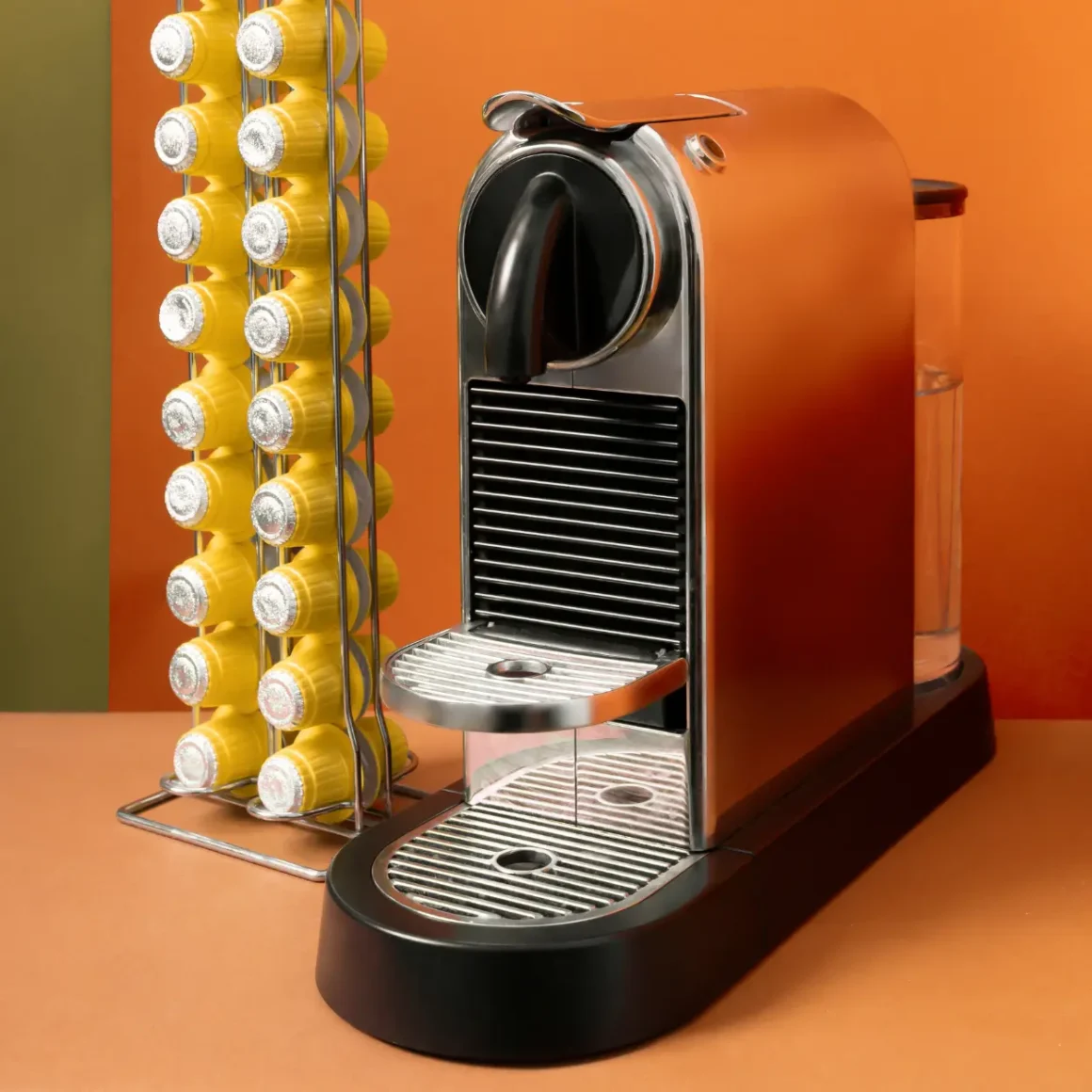
When it comes to making cappuccino coffee, the type of machine you choose can have a significant impact.
- Traditional Espresso Machines: These are the staple in many coffee shops and offer the most control over every aspect, from grind size to shot pulling. However, they come with a steeper learning curve.
- Automatic Espresso Machines: These provide a more straightforward experience, automating many steps. While convenient, they often offer less control over the brewing process.
- Pod-based Machines: These are the most user-friendly but limit you to the coffee types available in pod form, which may not be up to gourmet standards.
Deciding on a machine is a balancing act between control, convenience, and budget. Choose according to your level of expertise and how hands-on you want to be.
The Role of Coffee Beans in Flavor Profile
The choice of coffee beans can significantly influence the flavor profile of your cappuccino.
- Dark Roasts: Traditionally used for their robust flavors that can stand up to the milk.
- A Blend of Robusta and Arabica: Often found in Italian cappuccinos for an even more intense coffee experience.
- Fine Grind: As previously discussed, The texture of your coffee should be finely ground to extract a proper espresso shot.
Selecting the right type of coffee is crucial for the taste and aroma of your final cup. Your choice of coffee can either make or break your cappuccino experience.
Maintenance and Care: Ensuring Consistency and Longevity
A well-maintained machine is key to consistently good cappuccinos and long-term reliability.
- Regular Cleaning: Ensure you clean your espresso machine and milk steaming pitcher after each use to prevent coffee residue and milk scalding.
- Periodic Descaling: Limescale buildup can affect the taste and even damage your machine over time. Descale your machine according to the manufacturer’s recommendations.
- Proper Storage: Keep your coffee in a cool, dark place and milk stored at the correct temperature to ensure quality.
Attentiveness to machine care not only enhances the quality of your cappuccino but also prolongs the life of your equipment.
How are Cappuccinos Served?
The cappuccino, with its luxurious layers of espresso and frothed milk, has left an indelible mark on global coffee culture. Its service varies by region, influenced by cultural traditions and evolving coffee trends.
European Tradition
- Morning Ritual: In regions like Italy and wider continental Europe, the cappuccino is a cherished morning staple. Often, it graces breakfast tables alongside delicious pastries, serving as the beverage of choice to kick-start the day.
- Time Constraints: For Italians, the cappuccino is more than just a drink; it’s an embodiment of a cultural norm. This beverage is typically enjoyed only until 11:00 a.m., a testament to its hearty nature and the belief that it’s too rich for afternoon or evening consumption. Post this hour, the lean and powerful espresso takes the lead, favored for its supposed digestive benefits in the absence of milk.
North American Adaptation
- Emergence: By the mid-1990s, the cappuccino began to weave its way into the North American fabric, notably in urban hubs of the Pacific Northwest. This ascent paralleled the rise of premium coffeehouses and the burgeoning American coffee renaissance during the late 1990s and early 2000s.
- Serving Sizes: The traditional cappuccino, in its authentic form, is typically served in compact cups, usually holding 150–180 ml. Yet, as the new millennium unfolded, many fast-food chains introduced a more voluminous variant, often extending to portions as large as 600 ml, reflecting a departure from tradition and catering to a broader audience seeking more substantial servings.
In essence, the cappuccino’s journey across continents and cultures highlights the adaptability of this beloved beverage. Whether enjoyed in a petite European café or a bustling American coffee shop, the cappuccino remains a testament to the universal appeal of well-crafted coffee.
The Art of Tasting and Appreciation
The pleasure derived from a well-made cappuccino isn’t just about its preparation; it’s also about savoring each sip and understanding the flavors, aromas, and even the atmosphere that accompanies this cherished beverage. Tasting coffee is an art in its own right, requiring a discerning palate and an appreciation for the subtleties that make each cup unique. In this section, we’ll explore the intricate world of coffee tasting, from analyzing each sip to finding the perfect food pairings, all the way to professional coffee cupping techniques.
Discerning the Layers: Sip by Sip Analysis

When you sip a cappuccino, it’s like experiencing a symphony in a cup, where each element plays its part harmoniously. Here’s how to break it down:
- First Sip: Your first sip should give you the general impression of the cappuccino. Pay attention to initial flavors, acidity, and whether the espresso and milk are harmoniously balanced.
- Middle Sips: This is where you’ll notice the body of the beverage, the texture of the milk froth, and how well it complements the underlying notes of the espresso.
- Final Sips: The end of your cappuccino should leave a lasting impression. Take note of the aftertaste—whether it’s bitter, sweet, or a blend of both—and consider how long the flavor stays on your palate.
By the time you reach the bottom of your cup, you should have a full understanding of its flavor profile, complexities, and whether it meets your expectations for a good cappuccino.
Pairings: Best Bites to Accompany Your Cappuccino

A cappuccino can be an exquisite experience on its own, but the right food pairing can elevate it to new heights. Here are some top choices:
- Pastries: Croissants and Danish pastries have a buttery texture that complements the creaminess of a cappuccino.
- Chocolate: A piece of dark chocolate can contrast beautifully with the sweetness of the milk and bring out the bitter elements in the espresso.
- Nuts and Cheese: Almonds or walnuts offer a different texture, while mild cheeses like Brie can provide a creamy counterpoint to the robust coffee flavors.
Choosing the perfect pairing not only enhances your cappuccino but also makes for a more holistic culinary experience.
Coffee Cupping: The Professional Way to Taste
Coffee cupping is the standardized method that professionals use to evaluate coffee’s aroma and taste. While not entirely applicable to cappuccino, understanding this method can deepen your appreciation for coffee in general.
- Smelling the Grounds: The first step in coffee cupping involves sniffing the coffee grounds. The dry aroma can give you clues about what to expect in terms of acidity and flavor.
- First Tasting: After brewing, a spoon is used to slurp the coffee, allowing it to spread across your palate. This is where acidity, flavor, and aftertaste are initially noted.
- Cupping Score: Professionals use a scoring system to evaluate various aspects like aroma, acidity, body, balance, and overall flavor.
Getting into the nitty-gritty of professional tasting methods might seem overboard for your daily cappuccino, but the fundamentals can offer you a new lens through which to appreciate your beloved brew.
Italian Cappuccinos vs Cappuccinos Abroad
The cappuccino’s journey from its Italian roots to global appreciation is a tale of both tradition and transformation. Its flavor and texture have been meticulously crafted and preserved in Italy, while international interpretations have often taken liberties with its composition and serving style.
Italian Cappuccinos
- Historical Depth: Far from being a modern invention, the cappuccino has enjoyed centuries of admiration, particularly in Italy. It’s there that the cappuccino, or ‘cappuccini’ in its plural form, is often relished in the early hours, partnered with a delectable pastry to invigorate one’s morning.
- Distinct Italian Practices: To Italians, enjoying a cappuccino post-dinner is a cultural anomaly, with many preferring the sharp intensity of espresso as the day progresses. This caffeinated delight also holds a special place for the younger populace; its abundant milk content makes it a favored beverage for children, paralleling practices observed in regions like Europe and India.
- Craftsmanship: Italy prides itself on the artisanal preparation of cappuccinos. At the heart of this is the barista, a maestro in the art of coffee-making. Using specialized espresso machines, they begin with a freshly extracted espresso shot. What follows is the deft steaming and frothing of milk, using a steam wand that infuses the milk with countless tiny bubbles, expanding its volume and enhancing its flavor. This frothy concoction is then gently layered atop the espresso, ready to be savored.
Cappuccinos Abroad
- Diverse Definitions: As the cappuccino ventured beyond Italian shores, its definition became malleable. Convenience stores and certain coffee chains introduced versions that were sometimes a far cry from the Italian original. Instead of espresso, some opted for regular brewed coffee, while others turned to powdered mixtures to emulate the classic cappuccino experience.
- Pursuit of Authenticity: While there have been variations, it’s worth noting that many international coffee establishments have earnestly sought to replicate the authentic Italian cappuccino. Over recent years, there’s been a discernible uptick in the quality of cappuccinos outside Italy, as more places prioritize authenticity and craft.
In essence, while the cappuccino’s essence remains deeply intertwined with Italian culture, its global journey has ushered in a myriad of interpretations. The result is a dynamic beverage landscape where tradition meets innovation.
Cappuccino vs Other Coffee Drinks
The world of coffee is incredibly diverse, and cappuccinos are a classic staple. How do they measure up against other popular espresso-based beverages? Let’s delve into a comparative analysis to understand the nuanced differences and similarities among them.
Cappuccino vs Latte
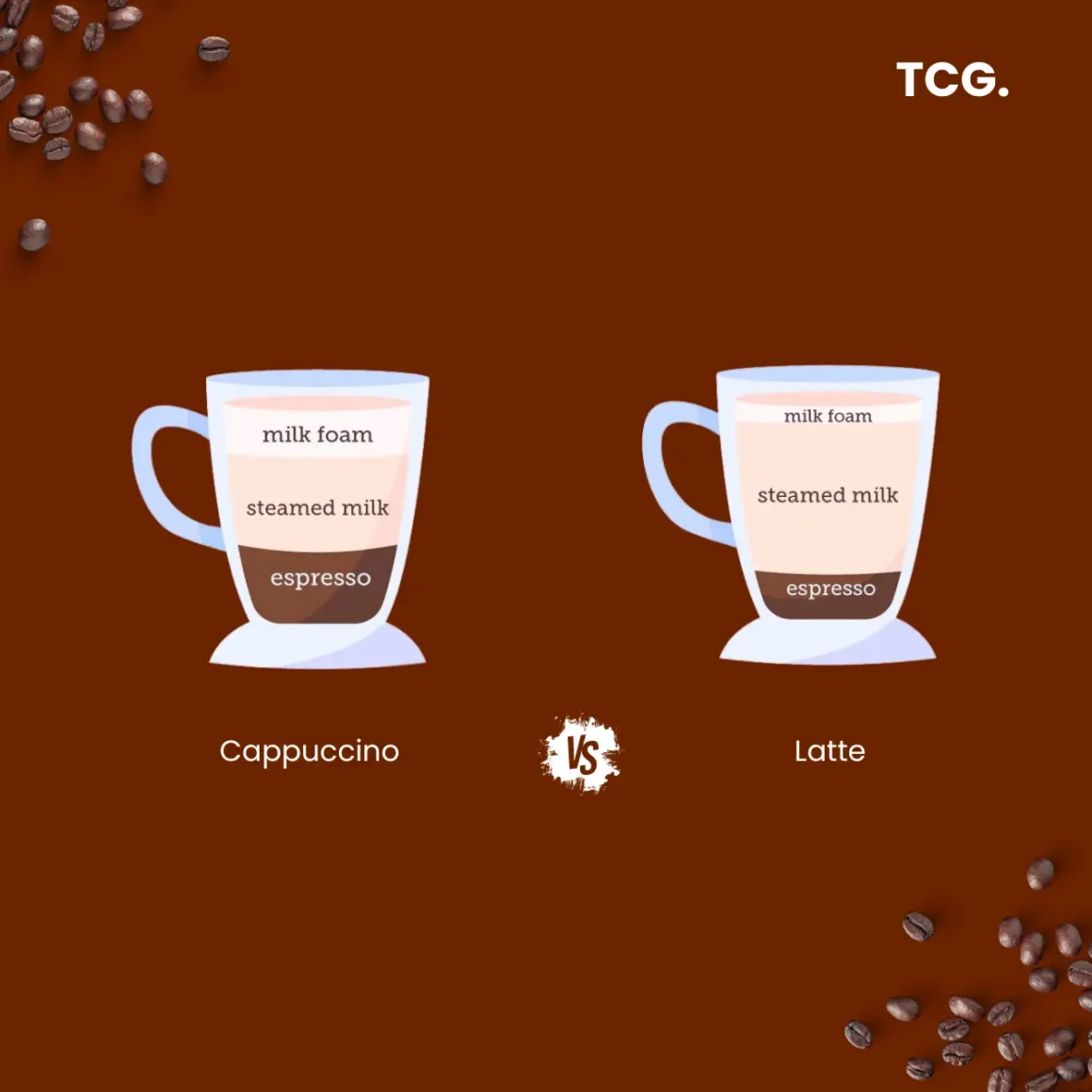
To initiate our exploration, let’s first examine the cappuccino vs latte. While both drinks share a foundation of espresso and milk, the proportions and presentation vary significantly.
- Milk Proportions: A cappuccino features equal parts espresso, steamed milk, and foam. In contrast, a latte contains a greater amount of steamed milk, complemented by a minimal froth layer.
- Texture: Cappuccinos have a distinct three-layer texture, which differentiates them from lattes where the espresso and steamed milk blend smoothly together.
- Serving Size: Lattes generally come in larger servings compared to cappuccinos, primarily due to the higher milk content.
- Aesthetic: Both can be presented with latte art, but it’s more commonly seen in lattes due to the smoother milk surface.
If you’re seeking a well-balanced coffee flavor with textural complexity, a cappuccino may be your ideal choice. However, for those craving a creamier and more milk-forward beverage, a latte should satisfy.
Cappuccino vs Mocha
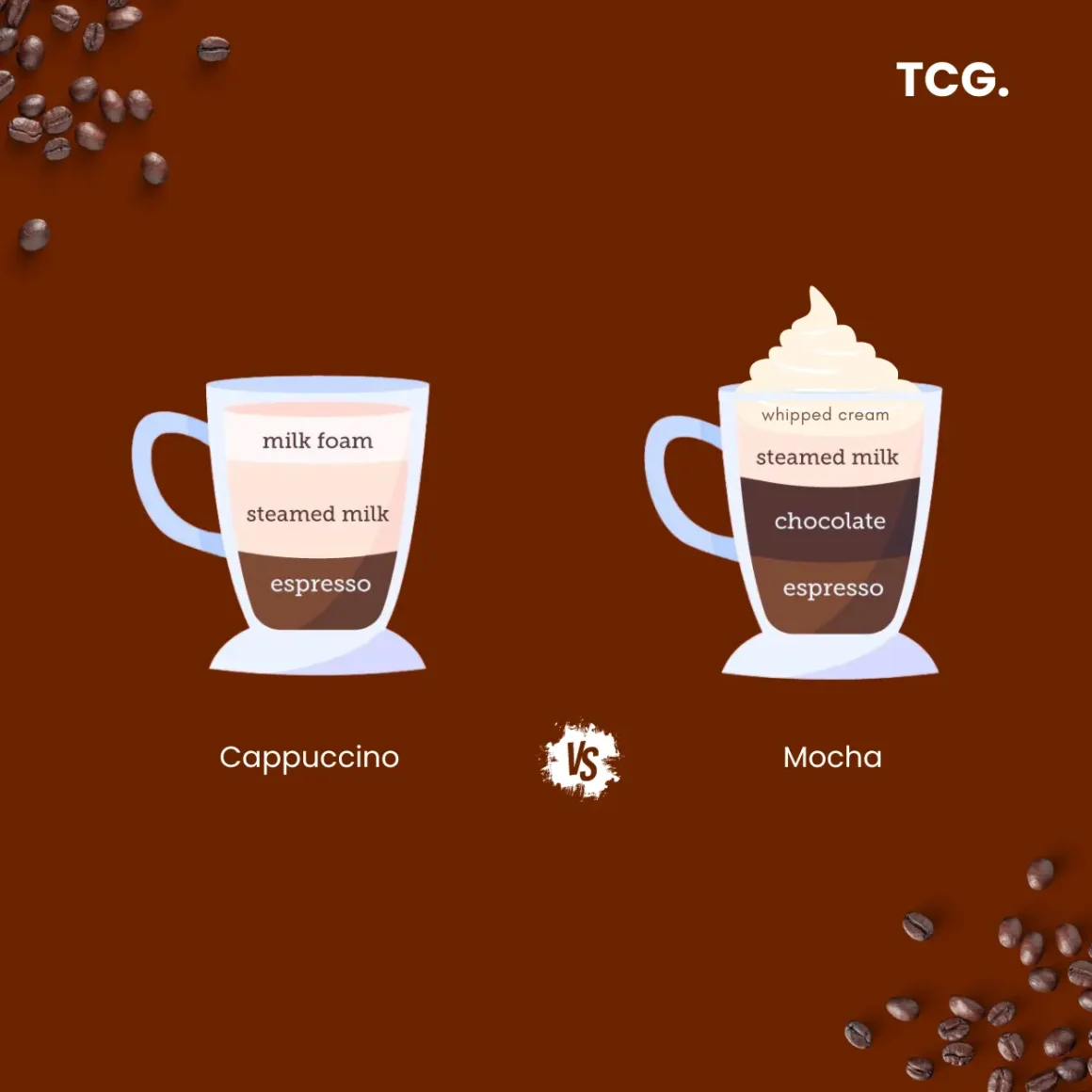
The key distinction in the cappuccino vs mocha showdown lies in an added flavor element: chocolate.
- Primary Ingredients: While cappuccinos are a harmonious mix of espresso, steamed milk, and froth, mochas bring in chocolate, often finalized with whipped cream.
- Flavor Depth: Cappuccinos offer a concentrated coffee experience, intensified by rich and creamy milk. Mochas, however, are a delightful blend where chocolate takes the leading role.
- Sweetness: Generally speaking, mochas will be sweeter due to the chocolate and possible whipped cream addition.
- Versatility: Mochas are often enjoyed in various seasonal or gourmet versions, featuring additional flavors like mint or caramel.
Conclusively, if you desire a stronger coffee flavor, cappuccinos might be the route to take. For those who like their coffee to flirt with dessert status, mochas provide a sweeter alternative.
Macchiato vs Cappuccino

When discussing macchiato vs cappuccino, it’s easy to get them mixed up. Both are espresso-based, but there are key differences.
- Strength: Macchiatos offer a more concentrated coffee flavor and higher caffeine levels. This makes them ideal for those needing a quick, potent pick-me-up.
- Visual Appeal: Macchiatos are generally less visually intricate than cappuccinos, which often feature latte art or a noticeable foam layer.
- Home Preparation: Given the fewer steps, macchiatos are generally easier to make at home.
- Balance: A macchiato suits those who discover espresso’s flavor too intense but deem a cappuccino too mild.
Ultimately, if you favor a bold coffee experience and prefer a drink that’s straightforward to prepare, a macchiato would be your go-to. However, if you enjoy the rich foam and balanced flavors, cappuccinos are worth the extra effort.
Cortado vs Cappuccino
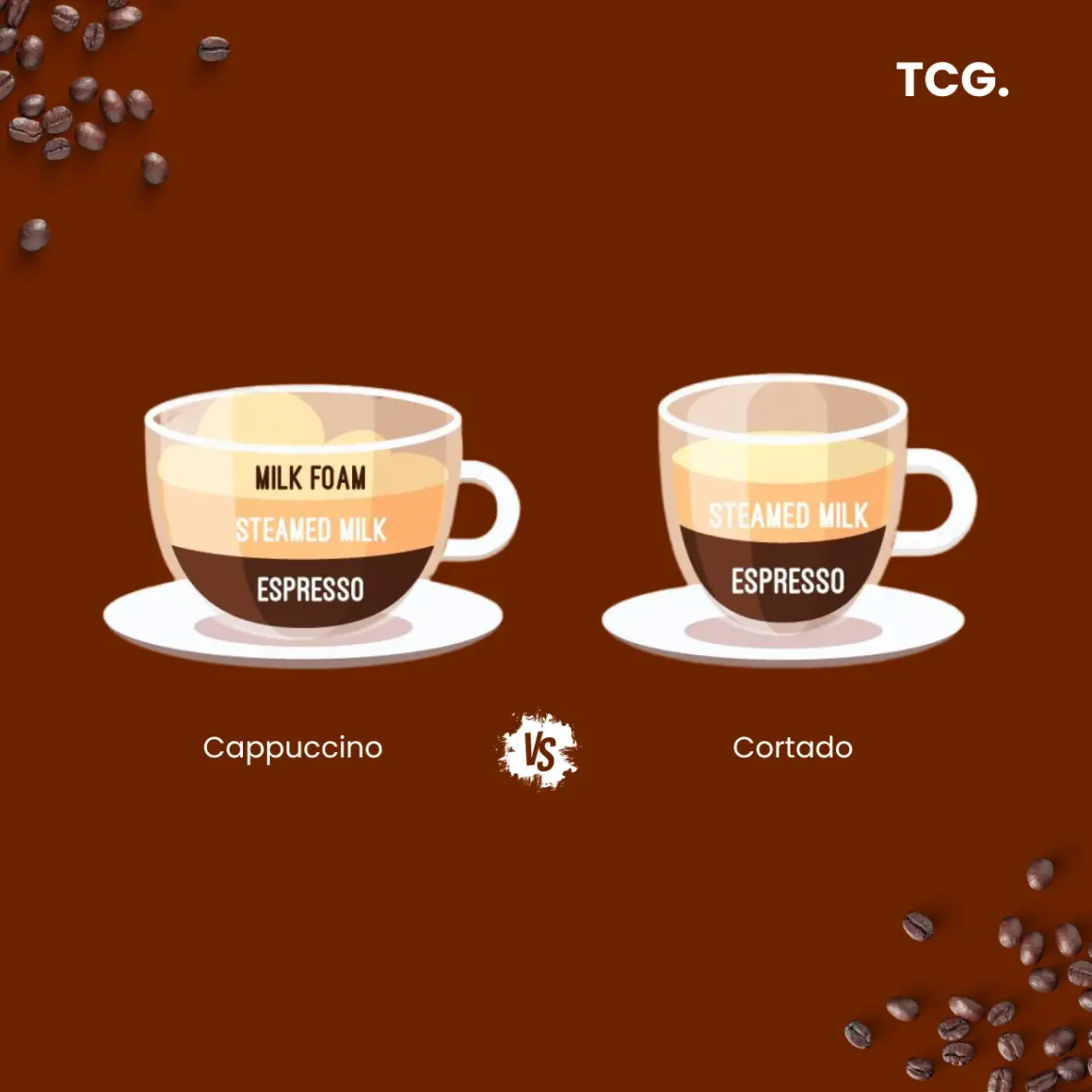
Finally, let’s tackle the cortado vs cappuccino comparison. Though similar in many respects, there are nuanced differences that set them apart.
- Volume and Intensity: Cortados are served in smaller sizes but pack a more potent coffee punch, thanks to a higher ratio of espresso to milk.
- Creaminess: Cappuccinos have a creamier texture due to the added froth, which cortados lack.
- Foam Levels: While cappuccinos are often heavy on the foam, cortados have little to none.
- Latte Art: Though both can technically feature latte art, it’s far more common in cappuccinos due to their foam layer.
In a nutshell, choose a cortado for a more intense, less frothy coffee experience. On the other hand, if you relish the creamy texture and artful presentation, cappuccinos are the way to go.
Beyond the Classic: Cappuccino Variations
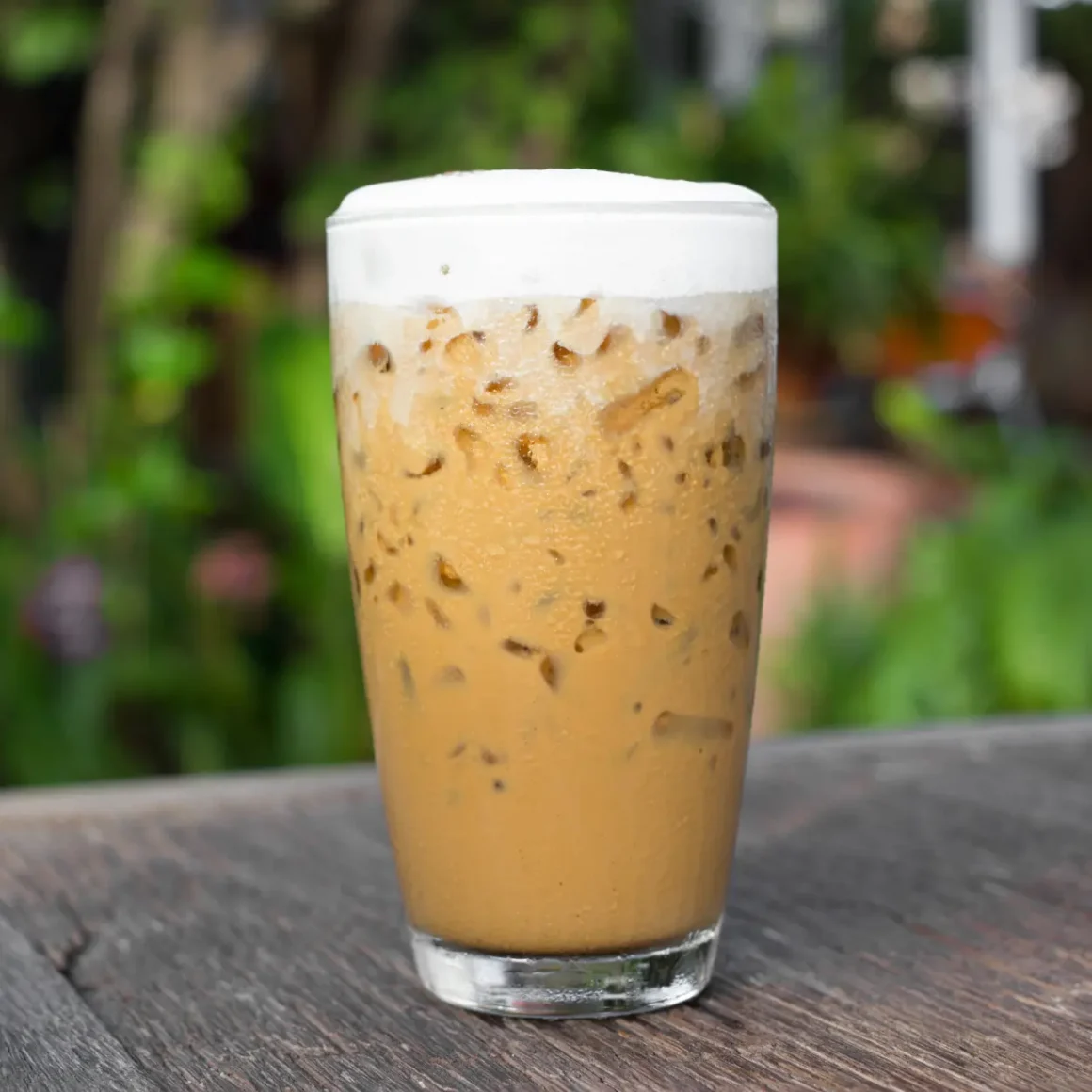
While a classic cappuccino offers a balanced blend of espresso, milk, and foam, the beauty of this coffee beverage lies in its adaptability. With minor tweaks and customizations, you can make a cappuccino that caters to a range of personal preferences and dietary needs. Whether it’s the sweltering heat of summer that has you craving something cold, or a unique dietary constraint, there’s a cappuccino variation for you.
Cold Cappuccinos: A Summery Delight
When summer’s heat is upon us, the idea of sipping on a hot cappuccino might not be the most appealing. Enter the iced cappuccino, a chilled version of the classic Italian favorite.
- Classic Iced Cappuccino: Prepared by adding chilled milk foam over a double shot of espresso and then pouring this over ice. It retains the rich flavor of a classic cappuccino but offers a refreshing take.
- Iced Cappuccino with Cold Brew: Instead of a hot espresso shot, use a concentrated cold brew for a smoother, less acidic profile.
- Coffee Ice Cubes: To avoid diluting the flavor, freeze some coffee in ice cube trays and use them in place of regular ice cubes.
Additional versions of this delightful drink encompass employing cream in place of milk, opting for non-dairy milk alternatives, and enhancing with cinnamon (within the United States) or cocoa powder (across Europe).
No matter how high the temperature soars, an iced cappuccino ensures that you don’t have to compromise on taste or comfort.
Flavor Additions: From Syrups to Spices
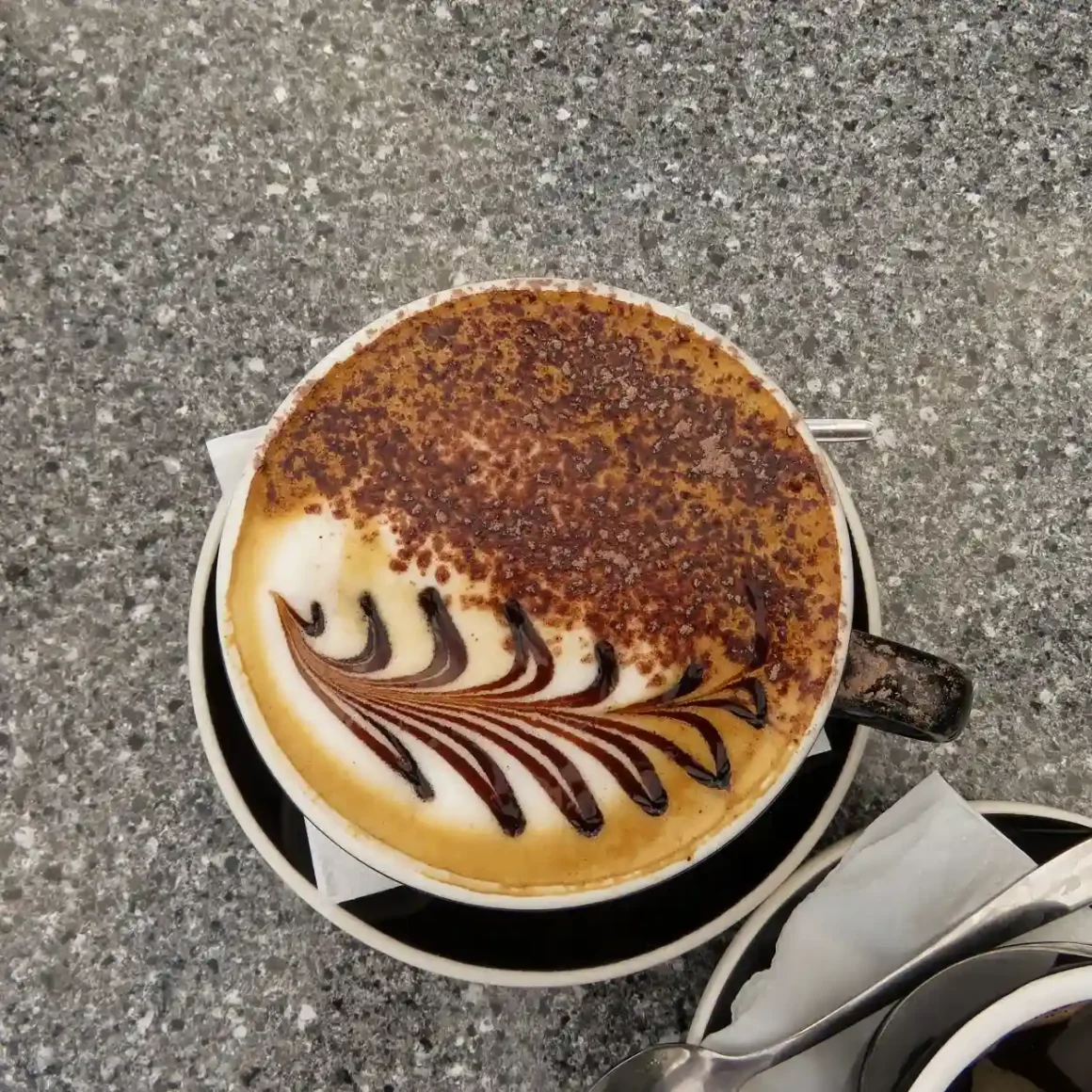
Standard cappuccinos are far from bland, but sometimes your palate may yearn for something extra.
- Vanilla Syrup: A couple of drops can transform your beverage into a sweet treat.
- Cinnamon: A dash sprinkled on the foam adds a spicy kick and aroma.
- Cocoa Powder: Perfect for those who enjoy a hint of chocolate without overwhelming the coffee.
With endless flavor additions at your disposal, creating a customized cappuccino experience is only a pour away.
Dietary Adaptations: Vegan and Health-focused Versions
There’s no reason to let dietary limitations prevent you from relishing a delicious cappuccino. A wide array of adjustments can cater to both health concerns and ethical dietary choices.
- Skim Milk: If you’re counting calories for cappuccino, skim milk is a wise choice. This alternative offers the classic taste without the extra calories.
- Plant-based Milks: Options like almond, oat, and soy milk make it possible to enjoy a vegan cappuccino. Be sure to choose varieties specially formulated for frothing and steaming.
- Sugar-Free Syrups: Want the flavor without the sugar? Opt for sugar-free syrups to get the sweetness without the guilt.
With a little creativity, a health-conscious or vegan cappuccino can be just as indulgent as the classic version.
Conclusion
In wrapping up our journey through the multifaceted world of cappuccino coffee, it’s evident that this beverage holds a revered spot in coffee culture for good reason. Its rich history traces back to Italian traditions, a heritage that has been honored and refined through meticulous preparation methods. Understanding a cappuccino starts with its foundation: the espresso. The balanced layering of this intense coffee shot with steamed milk and froth creates a harmonious blend that is both an art and a science. Perfecting the art of tasting a cappuccino involves appreciating each of these components individually, and then as a harmonious whole, evoking a sumptuous coffee experience.
Furthermore, when put head-to-head with other espresso-based drinks like lattes, mochas, macchiatos, and cortados, the cappuccino stands out for its balanced proportions and textural complexity. Each variant offers its own charm and strength, yet the cappuccino remains a timeless choice for those seeking a perfect middle-ground of flavor, strength, and creaminess. Whether you are a casual coffee drinker or a seasoned aficionado, the cappuccino offers a classic yet endlessly customizable option, making it a beloved staple in coffee shops and homes alike. With its versatile nature and rich lineage, the cappuccino truly embodies the essence of what makes coffee not just a beverage, but an experience.
FAQ
How has the cappuccino evolved over the years?
Originating in Italy, the cappuccino has evolved to accommodate different cultural preferences, including various flavors and dietary adaptations.
Why is milk frothing essential for a cappuccino?
Milk frothing is crucial for creating the creamy, airy layer that distinguishes a cappuccino from other espresso-based drinks.
Can cappuccinos be made without espresso machines?
While an espresso machine is traditional, a strong brewed coffee and manual milk frothing can substitute in a pinch.
What are the most popular flavor variations of cappuccino?
Beyond the classic cappuccino, popular variations include iced cappuccinos for summer and flavored versions using syrups or spices.
